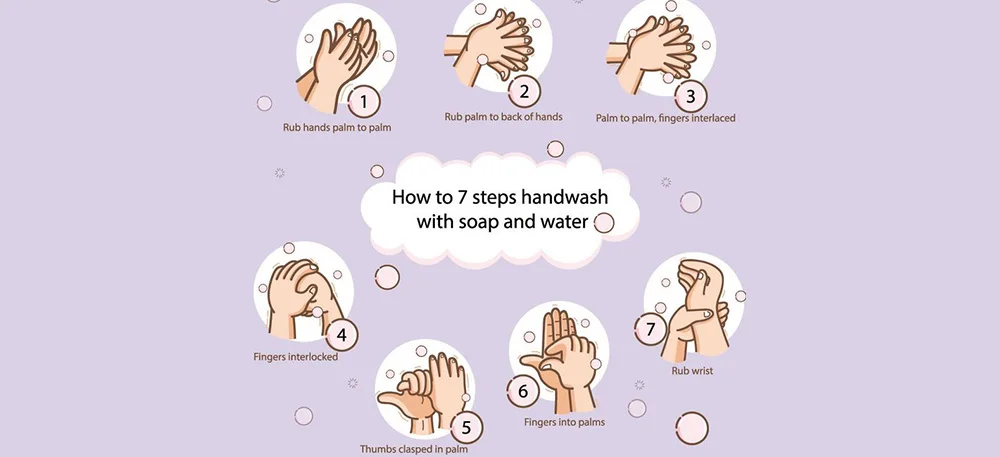As an adventure-loving individual, you may often find yourself on the trails, enjoying the thrill of exploration and connecting with nature. However, amid the excitement of trekking in the Himalayas, it is essential to recognize the importance of maintaining hygiene, especially for female trekkers. Hygiene isn't just about cleanliness; it's about safeguarding comfort, health, and overall well-being during outdoor adventures. For female trekkers, proper hygiene practices become even more crucial, as they navigate the unique challenges of menstruation, urinary health, and personal cleanliness in remote environments.
In this article, we'll delve into practical tips and strategies specifically tailored to address the hygiene needs of female trekkers. From menstrual hygiene management to personal cleanliness practices, we'll explore how to stay fresh, comfortable, and healthy while trekking through the wilderness.
-
Prepare your Hygiene Kit

Things to Pack in your Hygiene Kit
- Menstrual products
Depending on your preference, include menstrual cups, tampons, or pads to manage menstruation effectively during the trek.
- Wet Wipes
Opt for biodegradable wet wipes to cleanse your body and face when access to water is limited. They're handy for freshening up after a day of hiking.
- Hand sanitizer
Keep a small bottle of hand sanitiser to maintain hand hygiene, especially before meals or after using shared facilities.
- Biodegradable soap
Choose a biodegradable soap to ensure minimal impact on the environment.
- Toilet Paper
Bring enough toilet paper to last your entire trek.
- Toothbrush & toothpaste
A toothbrush and toothpaste are a must to maintain oral hygiene on the trek. It prevents bad breath and keeps your teeth protected.
Choose Lightweight and Compact Products
- When selecting hygiene products, prioritize lightweight and compact options to minimize the weight of your pack. Look for travel-sized versions or products specifically designed for outdoor activities.
- Consider multi-purpose products that serve multiple functions, such as a soap that can be used for both hand wash and laundry detergent.
Packing Tips for Your Hygiene Products
- Use waterproof containers or resealable bags to pack your hygiene items. This protects them from moisture and leakage, ensuring they remain dry and functional throughout the trek.
- Organize your hygiene kit in a way that makes items easily accessible when needed. Consider using pouches or compartments within your backpack for efficient organization.
-
Managing Menstrual Hygiene on a Trek

Choosing the Menstrual Products
- Consider using menstrual cups, tampons, or pads based on your personal preference and comfort level. Menstrual cups are reusable and eco-friendly, making them ideal for extended outdoor adventures.
- Pack an adequate supply of your chosen menstrual products, taking into account the duration of your trek and your typical menstrual flow.
Proper Disposal
- Practice proper menstrual waste disposal in accordance with Leave No Trace principles. Pack sealable bags or biodegradable disposal bags to contain used menstrual products.
Common Concerns Regarding Menstruation on a Trek
- Discomfort
Stay comfortable by changing menstrual products regularly, especially in hot or humid conditions. Consider using moisture-wicking underwear or liners to manage sweat and reduce chafing.
- Odor Control
Pack odor-neutralizing products like ziplock disposal bags or absorbent materials to minimize odor. Practice proper hygiene by washing your hands before and after changing menstrual products.
- Pain & Cramps
Trekking won’t aggravate period cramps. On the contrary, trekking is a physical exercise that works your lower body, back and stomach muscles, which can be quite helpful for reducing cramps! Additionally, you can keep roll-ons and pain-relief medication such as ibuprofen or acetaminophen with you to manage the cramps if you get any.
Additional Tips
- Pack adequately for your menstrual needs even if you are not expecting your periods during the trek. It is better to be safe than sorry.
- Stay hydrated and nourished to support your body during menstruation. Carry electrolyte tablets or drinks to replenish lost fluids and minerals.
-
Personal Hygiene Practices

- Wash your hands thoroughly with soap and water before handling food or eating meals to prevent the spread of germs and minimize the risk of illness.
- Opt for wet wipes on days when water availability is limited.
- Select clothing made from moisture-wicking and breathable materials to keep your skin dry and comfortable, even during intense physical activity. Avoid cotton, which retains moisture and can lead to chafing and discomfort.
- Wear moisture-wicking underwear and sports bras designed for outdoor activities to prevent chafing and irritation in intimate areas.
- Change into clean and dry underwear regularly to maintain freshness and prevent bacterial growth.
- Pack a small bottle of hand sanitizer for times when handwashing facilities are unavailable, ensuring you can maintain hand hygiene even on the go.
-
Hygiene Considerations for Urinary Health
- Stay hydrated
Adequate hydration is essential for urinary health. Drink plenty of water throughout the day to flush out toxins and maintain proper urinary function. Drink water regularly to prevent dehydration, which can exacerbate urinary issues and increase the risk of UTIs. Monitor your urine color; pale yellow indicates proper hydration.
- Practice good bladder habits
Urinate regularly, and don't hold it in for extended periods. Empty your bladder whenever the opportunity arises to prevent discomfort and reduce the risk of urinary tract infections (UTIs).
- Maintain hygiene after urination
Use wet wipes or carry a small bottle of water for cleansing when facilities are unavailable.
- Address Discomfort Promptly
If you experience discomfort or burning during urination, it could be a sign of a UTI. You can keep over-the-counter medication with you. Consult with your Trek Leader promptly if symptoms persist.
- Carry extra inner garments
Pack extra underwear and moisture-wicking clothing. Moisture and bacteria can thrive in damp clothing, increasing the risk of urinary issues.
Prioritizing hygiene is important to have a comfortable and safe experience in the wilderness. As women, we face unique challenges while trekking, however, with proper preparation and these practical tips, you can navigate the challenges with ease and confidence.





.webp)










.webp)


